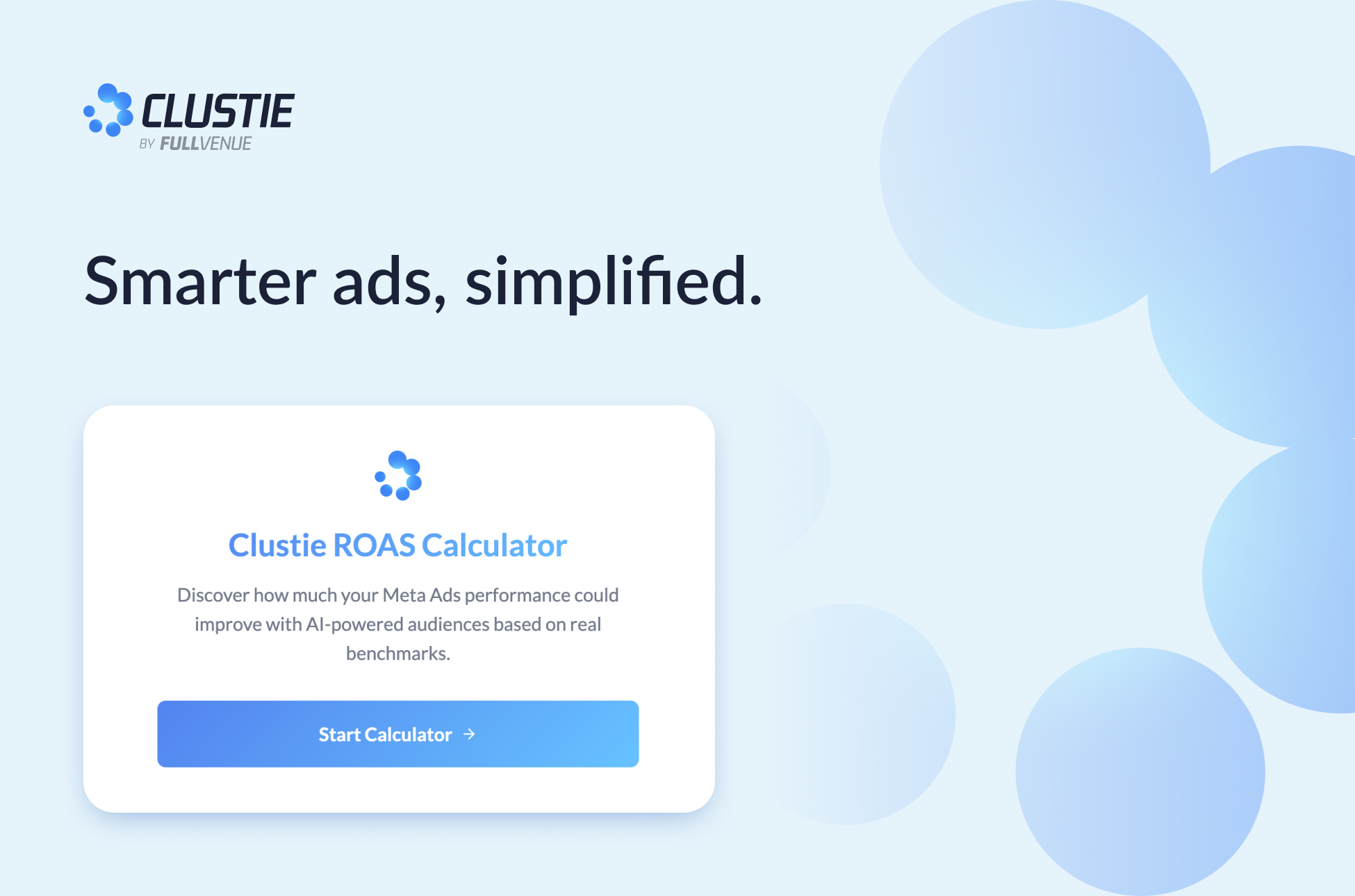How to Calculate How to Calculate ROAS: Formula, Benchmarks, Common Mistakes (+ Free Calculator)

E-commerce brands are spending more than ever on Meta Ads, Google Ads, and TikTok – but many still don’t know if their ads are actually profitable. That’s exactly why ROAS (Return on Ad Spend) remains one of the most important metrics in performance marketing today.
In this guide we’ll cover everything you need:the exact ROAS formula, realistic 2025 benchmarks, the biggest mistakes to avoid, and proven ways to improve your ROAS fast. Plus, you’ll get a free ROAS calculator at the end.
What is ROAS and why does it matter?
ROAS stands for Return on Ad Spend. In plain terms, it measures how much revenue your business earns for every euro (or dollar) spent on advertising.
The formula is simple: ROAS = Revenue from ads / Total ad spend
Here’s a practical example: if you spend €1.000 on Meta Ads and generate €3.000 in sales, your ROAS is 3.0. That means for every €1 invested, you earn €3 back.
Why does this matters? Because ROAS tells you instantly whether a campaign,channel, or your entire ad account is profitable – no guesswork needed.
What is a “good” ROAS?
This is a tricky question. Simply put, there isn’t a one-size-fits-all answer.
If your profit margins are 50%, you need at least a ROAS of 2.0 to break even. If margins are slimmer (say 25%), your break-even ROAS is 4.0.
In general, many e-commerce brands aim for a ROAS between 3x to 5x, but the right number depends on other variables such as your industry, product type, and overall growth strategy. The key is understanding your margins and setting benchmarks that make sense for your business.
The 4 MostCommon ROAS Mistakes (and How to Avoid Them)
Even brands that calculate ROAS often fall into traps. Some of the most common mistakes include:
- Only looking short-term – ignoring lifetime value (LTV) of customers acquired.
- Comparing ROAS without margins – a 3x ROAS means nothing if your margin is 20%.
- Not segmenting by campaign or channel – lumping Meta, Google, and TikTok together hides performance differences.
- Accepting current ROAS as “max potential” – leaving growth opportunities unexplored.
How toActually Improve Your ROAS in 2025
If your ROAS isn’t where it should be, don’t panic. There are actionable ways to improve it:
- Optimize campaigns: Improve targeting, creative, and bidding strategies.
- Leverage first-party data: Use customer purchase history and segmentation for smarter ads.
- Focus on high-value customers: Predictive analytics can identify which audiences are worth more in the long run.
- Embrace AI-driven insights: Tools like Clustie go beyond measurement, helping you unlock hidden potential in your campaigns.
Free ROAS Calculator – See Your Numbers Instantly
Calculating your ROAS is the first step. The real value comes from understanding how much more return you could be getting with smarter strategies and AI-powered insights.
To see where you stand, try our free ROAS Calculator. It takes less than 10 seconds.
👉 Calculate your ROAS now + see how much more you could achieve with Clustie.
If you’re having trouble accessing Clustie’s ROAS Calculator in the embed above, you can open it directly here.



.png)



